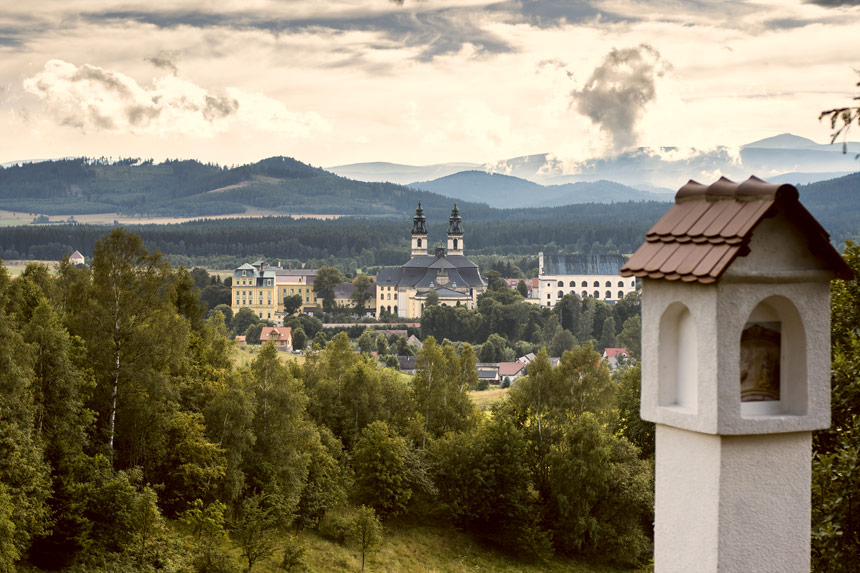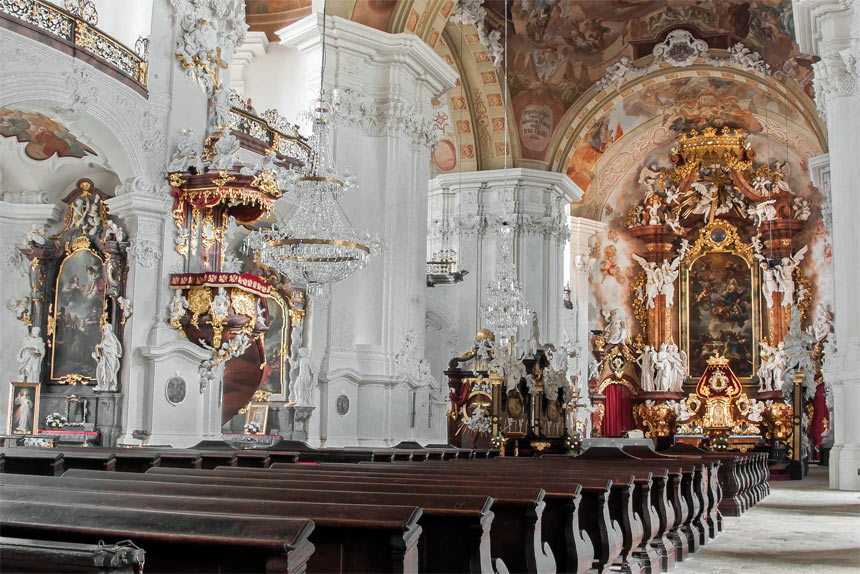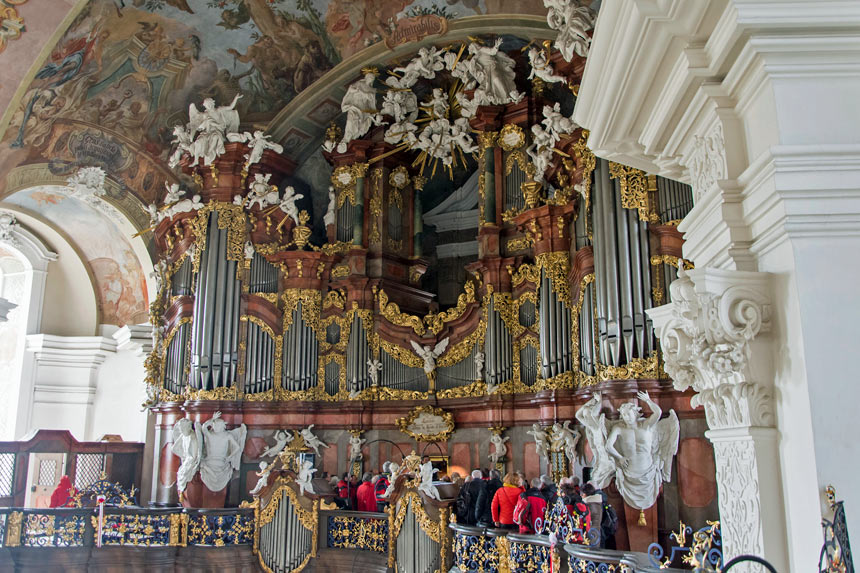This is now part of Poland and has had a turbulent history - part of Bohemia in the 10th century, then under Poland c.990, next gaining some independence, back to Bohemian control in 14th century, part of Habsburg Holy Roman Empire from 1526, captured by Prussia in 1742 ; then some of it part of Poland in the 1920s, and then after 1945 all becoming part of Poland with its German population deported and Poles resettled from the East!! There are mountains and some great architecture. Somehaow I found out about the baroque piles at Krzeszow (or Grussau)and found myself driving along deserted side roads. it was like being back in England in the 1950s and I have never forgotten it. The main problem has been to trace this place because it is referred to in different spellings and is unpronouncable!
The night after I saw it I camped on the nearby battlefield site at Legnickie Pole. This dreadful battle took place on 9 April 1241 when the Mongols invaded Europe and defeated the Poles iunder their Duke Henry the Pious. It was one of the most serious times for Europe because nothing seemed to stop the invading hordes of horsebound warriors. The story goes that Duke Henry was killed and beheaded and only identified by his six toed feet! There was a thunderstorm that night when I camped there....it was a dark place. Think of Game of Thrones and you get the idea.
Anna of Bohemia widow of Duke Henry the Pious founded the Benedictine abbey Krzeszow of Krzin 1242. It was given over to the Cistercians in 1289. The abbey was damaged in the Hussite wars and the Thirty Years War so we have a Baroque rebuild from 1727-35.. After Frederick the Great of Prussia took over Silesia the abbey became a centre for the parish, Some German monks came from Prague in 1919 and settled here. In the Second World War the abbey even became a Nazi detention centre.
The 3 minute video below is one of the best introductory videos I have found for anywhere. Shows the position among hills, exteriors and interiors. Highly recommended.
There are two churches : the church of St Joseph has frescos by Michael Willmann dating from 1690-96. The Abbey Church of St Mary is by Antpn Jentsch (1699-57. The interior is based on St Nicholas in the Old Town, Prague but with lower galleries. The west front has been described as "entirely original" and the greatest achievement of the Silesian Baroque". (Hempel Baroque art and architecture in Central Europe) I can barely remember it but from the photo (below) in the aforementioned book it is trully magnificent. It has trompe l'oeil paintings by Georg Wilhem Neunhertz, sculptures by Anton Dorazil and vaulting by Ferdinand Maximilian Brokoff. There is a mausoleum of local Gothic Piast rulers. Alas my memory of this is sketchy but there is a lot to see and maybe one day to return but not to camp at Legnica....
The organ by Michael Engler dates from 1732-7 and has 3 manuals plus pedal, and 50 stops. The recent rebuild by Jehmlich of Dresden has reurned it to its original state. Alas I did not hear it speak.
There are two churches : the church of St Joseph has frescos by Michael Willmann dating from 1690-96. The Abbey Church of St Mary is by Antpn Jentsch (1699-57. The interior is based on St Nicholas in the Old Town, Prague but with lower galleries. The west front has been described as "entirely original" and the greatest achievement of the Silesian Baroque". (Hempel Baroque art and architecture in Central Europe) I can barely remember it but from the photo (below) in the aforementioned book it is trully magnificent. It has trompe l'oeil paintings by Georg Wilhem Neunhertz, sculptures by Anton Dorazil and vaulting by Ferdinand Maximilian Brokoff. There is a mausoleum of local Gothic Piast rulers. Alas my memory of this is sketchy but there is a lot to see and maybe one day to return but not to camp at Legnica....
The organ by Michael Engler dates from 1732-7 and has 3 manuals plus pedal, and 50 stops. The recent rebuild by Jehmlich of Dresden has reurned it to its original state. Alas I did not hear it speak.
.






No comments:
Post a Comment